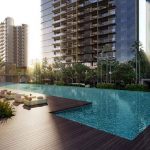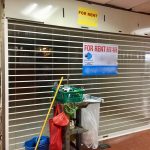Data released by the URA on Q42020 showed that Fringe Office Area is more resilient

Prices of office space decreased by 3.1% in 4th Quarter 2020, compared with the 0.2% increase in the previous quarter showed the Quarter 4 data by Urban Redevelopment Authority (URA). Rentals of office space decreased by 3.5% in 4th Quarter 2020, compared with the 4.5% decrease in the previous quarter. For the whole of 2020, prices of office space decreased by 10.7%, compared with the decrease of 0.6% in 2019, while rentals of office space decreased by 8.5%, compared with the decrease of 3.1% in 2019.
Supply in the Pipeline
As at the end of 4th Quarter 2020, there was a total supply of about 770,000 sq m GFA of office space in the pipeline, compared with the 767,000 sq m GFA of office space in the pipeline in the previous quarter.
Stock and Vacancy
The amount of occupied office space increased by 2,000 sq m (nett) in 4th Quarter 2020, compared with the decrease of 19,000 sq m (nett) in the previous quarter. The stock of office space decreased by 13,000 sq m (nett) in 4th Quarter 2020, compared with the decrease of 33,000 sq m (nett) in the previous quarter. As a result, the island-wide vacancy rate of office space decreased to 11.8% as at the end of 4th Quarter 2020, from 12% as at the end of the previous quarter.
2020 ended with the first full year of negative islandwide office net absorption since the Global Financial Crisis. Both office rents and prices fell, with Fringe Office Area showing more resilience than the Central Area.
Rents
URA’s Office Rental Index for the Central Region fell 3.5% QOQ in Q4 2020, a slight improvement from Q3 2020’s -4.5% QOQ, dragged by Central Area which fell 4.2% QOQ while Fringe Office Area declined 3.4% QOQ. For the full year, Central Region declined 8.5% in 2020 (2019: -3.1% YOY), attributed to a rent contraction of 9.0% and 8.5% for Central Area and Fringe Office Area respectively. This brings the Central Region rental index to 18.5% below the most recent peak in Q1 2015.
Prices
Prices deteriorated in Q4 2020 as the URA’s Office Price Index for the Central Region declined 3.1% QOQ after rising 0.2% QOQ in Q3 2020. Again, this was dragged by Central Area which slid 4.2% QOQ while Fringe Area was down 2.6% QOQ. This brings Central Region prices to a full year decline of 10.7% (2019: -0.6% YOY), as Central Area price fell 10.8% while Fringe Office Area declined 7.6%.
Vacancy and completions
Islandwide vacancy of office properties tracked by the URA improved further sequentially to 11.8% in Q4 2020, from 12.0% in Q3 2020, as the occupied office space increased 21,500 sq ft (from a decline of 205,000 sqft in Q3 2020), helped further by a reduction in office stock by 140,000 sq ft (Q3 2020: -355,000 sq ft). For the full year, islandwide net office absorption stands at negative 850,000 sq ft, due to business closures and corporate downsizing during a COVID-struck 2020.
Ms Tricia Song, Head of Research for Singapore at Colliers International, said: “The last time Singapore has ever witnessed a full year of net negative absorption was in 2009 (-237,000 sq ft), during the Global Financial Crisis.”
She added, “Based on Colliers’ research, CBD Grade A office declined 2.1% QOQ in Q4 2020 and 5.4% for the full year to SGD9.57 (USD7.24) per sq foot, on weak global economic conditions due to the pandemic.”
“Overall, 2020 was a favourable year for occupiers, providing them with opportunities to renew leases at lower rents, while landlords are more willing to negotiate and offer higher incentives.
With the rent decline presenting value in the best office space in the city centre, the CBD Grade A office space, tracked by Colliers, saw a positive 336,900 sq ft net absorption in 2020, despite prevalent remote working during the pandemic-induced recession. The net absorption could be attributed to previous flexible workspace commitments. Meanwhile, Grade A and Premium CBD office vacancy expanded to 5.2% from 4.9% in Q3 2020 and 3.4% in 2019, partly due to new completions and partly due to contraction in net demand.
Looking forward, we expect CBD Grade A rents to rise 5.5% in 2021 to SGD10.09 (USD7.63) per sq ft. in line with Singapore’s economic rebound, with demand to be driven mainly by the technology sector. Albeit weak now, market dynamics are conducive for a recovery towards the end of 2021. 1) Oxford Economics forecast a positive GDP growth of 5.6% for 2021; 2) new office demand driven by the technology sector and an overall business recovery; 3) benign supply levels in 2021-2022 (average annual expansion at 2.6% of stock versus 4.7% for the last five years); 4) positive net absorption to tighten vacancy before the next supply hike in 2023; 5) CBD stock will likely be further reduced through redevelopment. So far, AXA Tower, Fuji Xerox Towers and Tower Fifteen have announced redevelopment plans, and we expect more to jump onto the bandwagon over the next few years.”
The URA’s real estate statistics for 4th Quarter 2020 trekked residential, office and retail data. Prices of private residential properties increased by 2.1% in 4th Quarter 2020, compared with the 0.8% increase in the previous quarter. For the whole of 2020, prices of private residential properties increased by 2.2%, compared with the 2.7% increase in 2019.
Prices of retail space decreased by 2.1% in 4th Quarter 2020, compared with the increase of 2.2% in the previous quarter. Rentals of retail space decreased by 5.2% in 4th Quarter 2020, following the decrease of 4.5% in the previous quarter. For the whole of 2020, prices of retail space decreased by 4.5%, compared with the increase of 1.3% in 2019, while rentals of retail space decreased by 14.7%, compared with the increase of 2.9% in 2019.
Mr Paul HO, chief mortgage officer at iCompareLoan, said: “it is still difficult to see how 2021 will pan out for real estate in Singapore. Those that want to buy or invest in properties should speak to a panel of real estate professionals as they can help you with affordability assessment and a promotional home loan. The services of such experts are free. Their analysis will give best home loan seekers better ease of mind on interest rate volatility and repayments.






